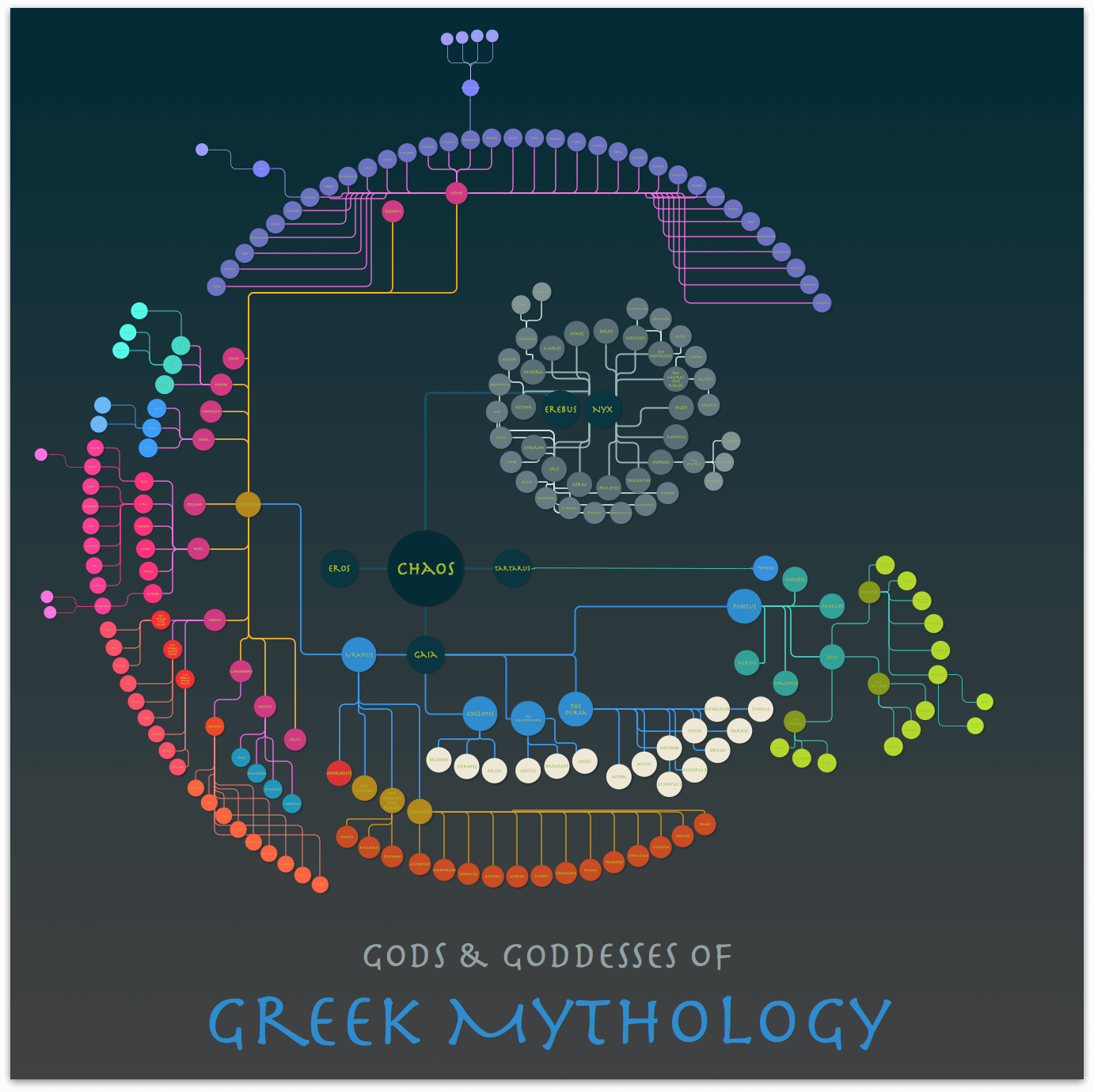UPDATE: October 2016
The Getting Started with OmniGraffle tutorial is based on use of OmniGraffle 6 (version 6.6 to be exact). If you have recently purchased OmniGraffle 7, you can still use this tutorial to learn about OmniGraffle; however, there will be some noticeable changes in the user interface. In particular, the Sidebar, Resource Browser, and the Inspectors have all been greatly improved in OmniGraffle 7.
Work began on a new OmniGraffle 6 tutorial a few months ago. We wanted this to be something that was visually-compelling; something that showed off OmniGraffle’s strengths as a diagramming and design tool. Ultimately, we swung for the fences by creating a “family tree” of sorts based on Greek mythology:

The result is a new tutorial, titled Getting Started with OmniGraffle. This step-by-step guide goes beyond creating a basic flowchart. Rather than just showing you how to connect boxes with lines, you will layout and design a fairly complex diagram, apply a color palette, and explore new ways to work in OmniGraffle 6—and your Mac—as a designer.
While working through this tutorial, you will:
- Use the Resource Browser to choose a template and create a new document
- Use the Outline Editor to enter hierarchical data for creating structured diagrams
- Discover how to open a structured OmniOutliner file in OmniGraffle 6 and use Auto Layout to “flow” your diagram
- Use the Diagram Layout inspector to explore and choose a layout style for your diagram
- Create Workspaces from the Inspectors you need to make your design work go faster
- Add a custom color palette and discover “hidden” features of OS X’s Colors window, and then…
- …apply those colors to the objects and connecting lines in the diagram
- Learn how to use layers and create “pseudo-guides” for aligning objects in various patterns
- Discover how lines connect to objects and reconfigure their positions with object Magnets
- Apply a color to the canvas
- Create and style text objects to add a title to your diagram
When you’ve finished working through the tutorial, there’s a bonus section toward the end—Where to Go From Here—where you’re encouraged to push the limits even further. To change up the diagram, either by changing the design or adding more Connection Lines to denote relationships. (And if you’re familiar with Greek mythology, you could end up adding a lot lines to Zeus and his various partners.)
You can download Getting Started with OmniGraffle as an EPUB-format ebook, and there’s also a Zip file to download, which contains the following assets for working through the tutorial:
- GreekMythology.oo3 — Hang on to this OmniOutliner file for the end of Part 1. This file contains the hierarchical list of prominent members found in Greek mythology, and you will open this file in OmniGraffle prior to starting Part 2.
- NSColorPanelSwatches.plist — If you so choose, you can add this file to ~/Library/Colors on your Mac to get all of the color swatches you need in the Colors window when applying colors to objects and lines in the diagram.
And, as always, please let us know what you think about Getting Started with OmniGraffle, as well as your thoughts on other tutorials you’d like to see from us.
